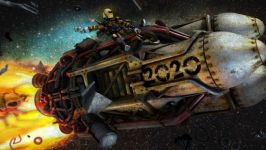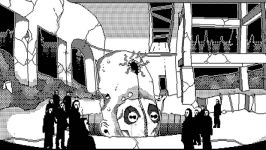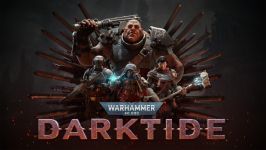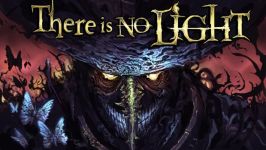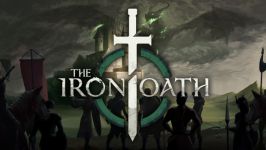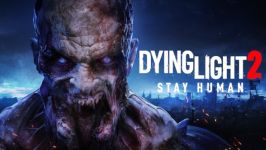Even though Pathfinder: Wrath of the Righteous continues on with many of the ideas and gameplay elements from Pathfinder: Kingmaker, the two games aren't really connected on a story level. There's a few little references sprinkled throughout the world, and one major character does make a reappearance alongside a seemingly immortal pet cat, but for the most part you can have a great time with Wrath of the Righteous without even touching Kingmaker once.
That is exactly what I would recommend as well given that Wrath of the Righteous functions essentially as a bigger, better and bolder version of Kingmaker. There's a lot more variety in character builds and options, the combat encounters are expanded and the maps are more interesting, the story is better paced and doesn't take nearly thirty hours to get started, and there's a whole assortment of quality of life features to tie everything up in a nice little bow.
So if you're curious about what exactly Wrath of the Righteous does well, as well as where it stumbles and falls flat on its face, allow me to share my thoughts after rolling so many dice over the past week that I think I'll be seeing skill checks in my dreams for months to come!
Video version of this review (~17 minutes)
Character Customization
Given that it's the first thing you see when you launch the game, the expanded character creation and progression options are definitely something I want to showcase. I say this because Kingmaker already had an insane amount of traits and spells to choose from, and Wrath of the Righteous has only added more onto that already massive pile. Every single basic class has numerous subclasses, every single spellcaster has access to dozens upon dozens of spells, and the list of available traits is so staggeringly long it'll probably take you the better part of a day to go over them all.
As if that just wasn't enough, Wrath of the Righteous also brings in Mythic Paths that offer additional progression and roleplaying options with their own unique traits, abilities and dialog responses. These Mythic Paths can allow you character to become either a demon or an angel, a chaotic force of goodness or a steadfast avatar of balance, and if you play your cards right, perhaps even something far greater. If you're feeling like the usual flavors of evil are just not wicked enough, however, it's also possible to toss everyone aside and become a world-ending threat in your own right. While that's certainly not my thing, it's still delightful to see it available as an option!
I personally chose to become one of the Azata, the aforementioned Chaotic Good aligned denizens of Elysium, and I must admit I was genuinely impressed by how much the world reacted to my choice. Even outside of main quests people were actually aware that there's butterflies constantly flying around me and that my dragon is likely to attempt to steal all of their jam jars the moment she gets out of sight. This is such a tiny detail in the grand scheme of things, but when combined with all of the customization options it creates a character and a world that is very easy to get immersed into, and that consequently made the whole experience a lot more memorable for me.

They don't stay small for long though!
Story
With that in mind, I also found the story to be a lot more engaging time around, even if it isn't breaking new ground in regards to its themes. The premise is that you're the commander of a grand crusade that's trying to seize control of the Worldwound - a blighted scar on the land from which demons constantly pour out to attack the lands of the innocent. While there are some twists and turns throughout the story, the whole thing proceeds pretty much as you would expect, which does the story wonders in terms of pacing.
Kingmaker greatly suffered from what I would describe as the 'distracted dungeon master syndrome' where you would constantly go on expeditions that only loosely connected to the main storyline, so when the end did finally come it felt both sudden and unsatisfying. I can't say if the same happens with Wrath of the Righteous' finale given that even after spending over fifty hours with it over the past week I've still not fully completed it, but the story is both structured better and simpler to follow, which makes it far easier to get yourself wrapped into it.
So even though Wrath of the Righteous' campaign is absurdly long, the hours do pass by quickly and pleasantly. It also might not seem like it, but Wrath of the Righteous belongs to that insidious group of games where you can start playing at a reasonable hour, get up to grab a glass of water and then suddenly realize it's 3AM and you need to get up in the morning! This happened to me at the very start as I simply sat down to check if everything was working properly, only to then spend the entire rest of the day fully exploring the tutorial section... and that's before the map actually opens up!

Even the tiny city map has nearly a dozen hours of content!
Voice Acting and Companions
Another area where Wrath of the Righteous improves upon what Kingmaker started is the voice acting. Not only is there more voice acting in main quests, but the quality of the performances has seen a sharp rise as well. My favorite out of the bunch is the succubus that serves as your main foil for a while since she pours in so much emotion, rage and passion into every single conversation that it's just a joy to listen to. Outside of a couple of minor characters that I felt were forcing things too much, the only real complaint I have is that there wasn't more voiced dialog!
This goes doubly so for the companions you'll travel with as this time around you're getting a much more diverse batch of characters, even if you're playing as a goody two-shoes. Given that you're a part of a holy crusade there's a couple of generic ones like the standard paladin and cleric, but the rest more than compensate for that given how... unusual some of them are. I obviously won't go into details here in order to avoid spoilers, but let's just say that even the seemingly evil characters have a lot going for them and leave it at that.
I especially love how you can find special companions throughout the world that bypass the usual party restrictions, thus giving you a more personalized story as these companions will either chime in during conversations or even join you in battle. The best example of this is definitely Aivu, the 'little' dragon you get as a part of joining the Azata Mythic Path. She not only serves as a solid combatant, but also frequently pokes her head in to add some adorable or hilarious remark, thus bringing some much needed levity to the whole crusade against ultimate evil thing.
In terms of actual complaints, I'd say my biggest issue with the companions is their class distribution. Wrath of the Righteous gives you access to three archers fairly early on, and then later throws yet another ranger your way, even if this one is melee focused. Similarly, you get two flavors of cleric-style healers that, while not identical in abilities and playstlyes, do pretty much serve the same role. While this does allow you to pick and chose your favorites, I would've preferred to see some more interesting classes or combinations make an appearance.

There's never a dull moment when traveling with Aivu
Combat and Exploration
When it comes to the combat and exploration, Wrath of the Righteous mostly sticks to the same formula as Kingmaker. After all, if it works why bother changing it? So instead of rebuilding the whole system from the ground up, Wrath of the Righteous mostly just adds a bunch of quality of life changes and more interesting encounters to mess around with.
For example, you can now very easily tell when your gear's enchantments are conflicting with other items or buffs you're using. This might not sound like a big deal, but even as a D&D veteran I still had a fair few cases where my super-expensive gear would've been completely useless due to my party composition, so having the game warn me about it was definitely welcome. Even the shop interface has been greatly improved with there now being an option to quick-sell most garbage items, though sadly it's still not good enough as I'm always left with scores of needless potions and scrolls that I have to manually sell every single time.
On the combat side of things you can now encounter far more skill checks before even getting to the battle, which makes things like stealth, mobility and knowledge just as important as good ol' fashioned persuasion. And since some of the checks you need to pass are remarkably high, getting the drop on enemies or even turning some onto your side feels particularly satisfying. Best of all, these skill checks no longer seem to give an immense amount of experience as they did back in Kingmaker, so even failing a couple doesn't feel all that bad since it just adds to your character's story.

Can't say the same goes for the poor saps you don't manage to save though
I also have to commend Wrath of the Righteous for continuing on with its predecessor's options when it comes to combat. You can play everything in real time with pause like in the old classics, go at quarter of the speed in order to maintain better control of your characters, or just work your way through battles in proper turn-based combat. All three styles are fully supported and highly useful, so mixing it up based on encounter will do you a great deal of good.
The exploration itself has also seen a small but important overhaul, with there being seemingly less maps overall though the ones that are present are usually a lot more elaborate. This is especially noticeable throughout the main campaign as some of the bigger maps are so multi-layered and filled with details that I frequently needed to move my camera around in order to check everything out, something I never really bothered to do with Kingmaker and its relatively level scenery. And if you're a fan of puzzles, you'll be happy to hear that not only are they back in Wrath of the Righteous, but they're even more tricky to solve than before!

Turn-based combat works really well for boss encounters
Bugs and Issues
Unfortunately, all of these improvements and quality of life changes do come at a cost - bugs, and loads of them! Throughout my fifty hours with Wrath of the Righteous I've encountered just about every type of bug. Some of them were harmless, some were hilarious, some were simply annoying, and one in particular was so game-breaking I had to re-route all of my armies in order to avoid it.
Basically, archers in my crusader army (more on that in just a moment) simply soft-locked the game whenever they moved for the second time. Since I heavily relied on archers to soften up priority targets before my vulnerable melee units charge into the fight this was completely crippling to my strategy and I had to avoid an entire area of the campaign map until I could muster a sizable enough melee force to brute force my way through it.
An update eventually sorted this out and I was back to normal, but that was just one of the major annoyances I had to contend with. Another bug that popped up multiple times was the infamous 'take it slow' bug from Kingmaker where my entire party would suddenly start walking as slowly as humanly possible, as if they were completely exhausted. In Kingmaker spamming the slow time keybind usually fixed it, whereas in Wrath of the Righteous I pretty much had to restart my game every time or enjoy playing it at a quarter of the speed.
Thankfully, the really bad bugs were few and far between. I'd say I encountered a big roadblock every ten to fifteen hours, which given the size of Wrath of the Righteous didn't end up being too tedious to deal with. Most of the other bugs were either inconsequential or humorous in nature, with my absolute favorite being the moonwalking leopards! For whatever reason every time I summoned a magic leopard it would exclusively move by moonwalking around, spin like a merry-go-round while standing 'still', and attack by aggressively shaking its butt at the enemy. Needless to say, I summoned a lot of leopards!

It takes a truly brave soul to be able to run into combat ass-first
Crusade Mechanics
Now then, the whole crusade thing! Instead of building your small kingdom piece by piece like in Kingmaker, in Wrath of the Righteous the side-game is more of a Heroes of Might and Magic inspired strategy. There's still plenty of choices to make and advisors to listen to, but most of that is in service of beefing up your armies, preparing your citadels for demonic invasions and launching attack after attack into the very heart of demon-controlled territory.
You can recruit units on a weekly basis after which you can fit them into armies led by highly specialized heroes that are mostly there to support your offensive. Once you have your armies assembled you can engage demons on the campaign map which will trigger a turn-based battle. These battles play out almost exactly the same as in Heroes of Might and Magic, with pretty much the same types of units and abilities to boot. Knights are fast and great at attacking archers, infantry is there to trade blows and die by the hundreds to protect your weak units, while casters like paladins are all about offering magical support at the key moment.

The city building is a lot less abstract this time around
It's a fine concept and in theory I should've absolutely loved it given that Heroes of Might and Magic 3 is one of my favorite games ever, but right now it's just a bit too unpolished for me to truly enjoy. The biggest issue I have with these battles is that the power difference between units is comically large, to the point where strategy becomes almost meaningless. My Hellknights are so powerful that they can obliterate everything they touch despite being fast-moving cavalry, whereas my hordes of clerics are only really good at blocking arrows with their face and throwing the occasional heal out since they deal no damage and move as slow as molasses.
Same thing goes for the enemies. Most of the enemy units are helpless and will die in droves at even the slightest touch, and then there are random enemies that have such absurd attack power that they can literally kill all of your infantry units in one hit. The end result was me reloading every single important fight multiple times in order to avoid setting myself back a month of in-game progress due to a sudden instakill, which as much as I like perfecting fights did cheapen the whole experience due to how often I had to rely on it.
However, even with all of my complaints I have to say that I vastly prefer the crusade mechanics to the kingdom management ones from Kingmaker. The battles might need a bit more work before they're up to scratch, but at least it always felt like I was moving forward with my goals. After all, conquering demon-infested forts and slowly pushing the endless tides of evil back is a whole lot more exciting than sitting in your throne room for months on end watching timers go down!

Closing Thoughts
With compelling characters, an absurd amount of customization and a massive world to explore, Wrath of the Righteous stands as an exemplary successor to classic CRPGs of old. While the numerous bugs do their best to bring it down, Wrath of the Righteous is simply far too big and ambitious to be constrained by them. So if you're even remotely interested in the genre, and the thought of reading vast quantities of dialog doesn't scare you, then I would heartily recommend Wrath of the Righteous.
Now, if you'll excuse me, I have to attend my dragon's tea party!


